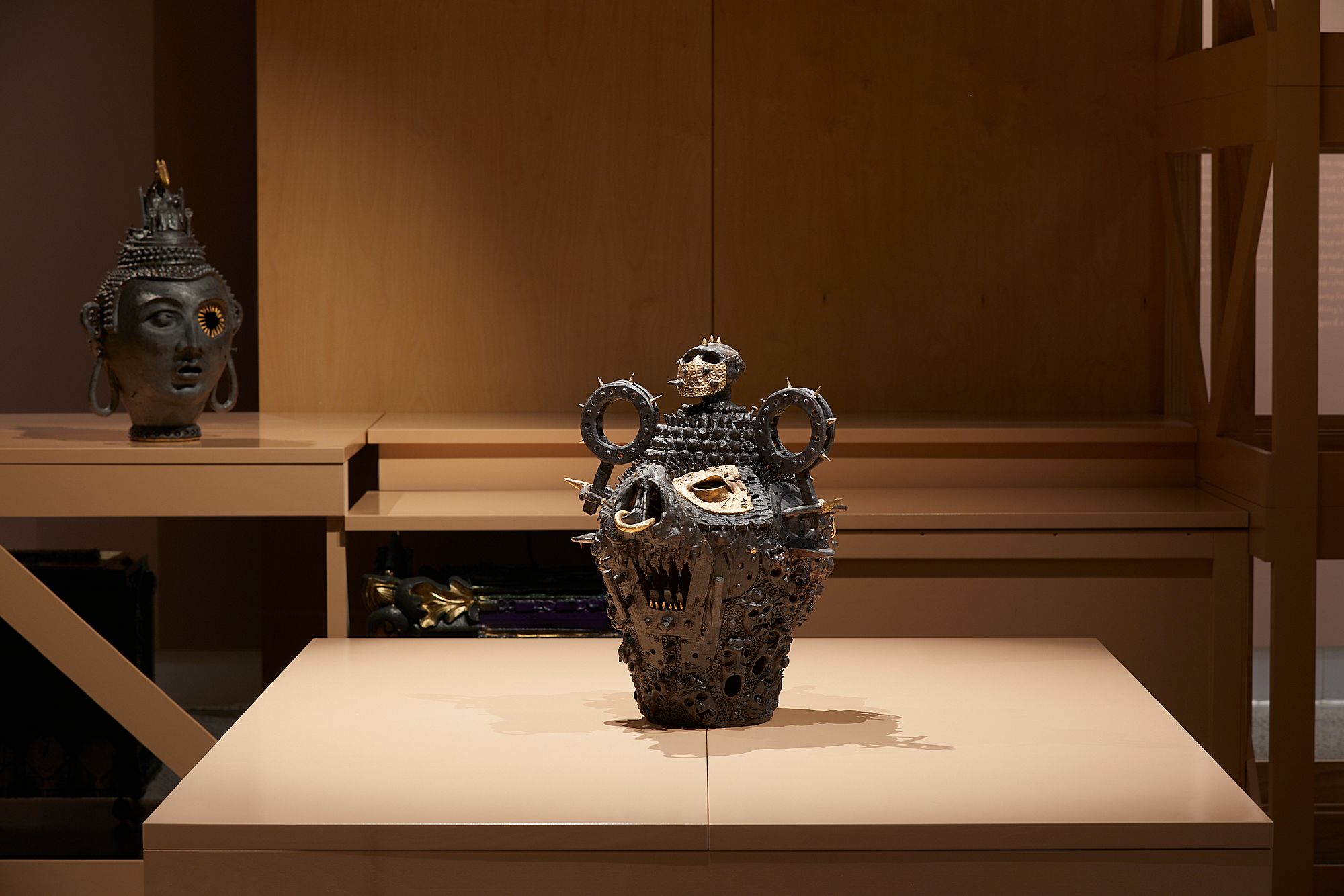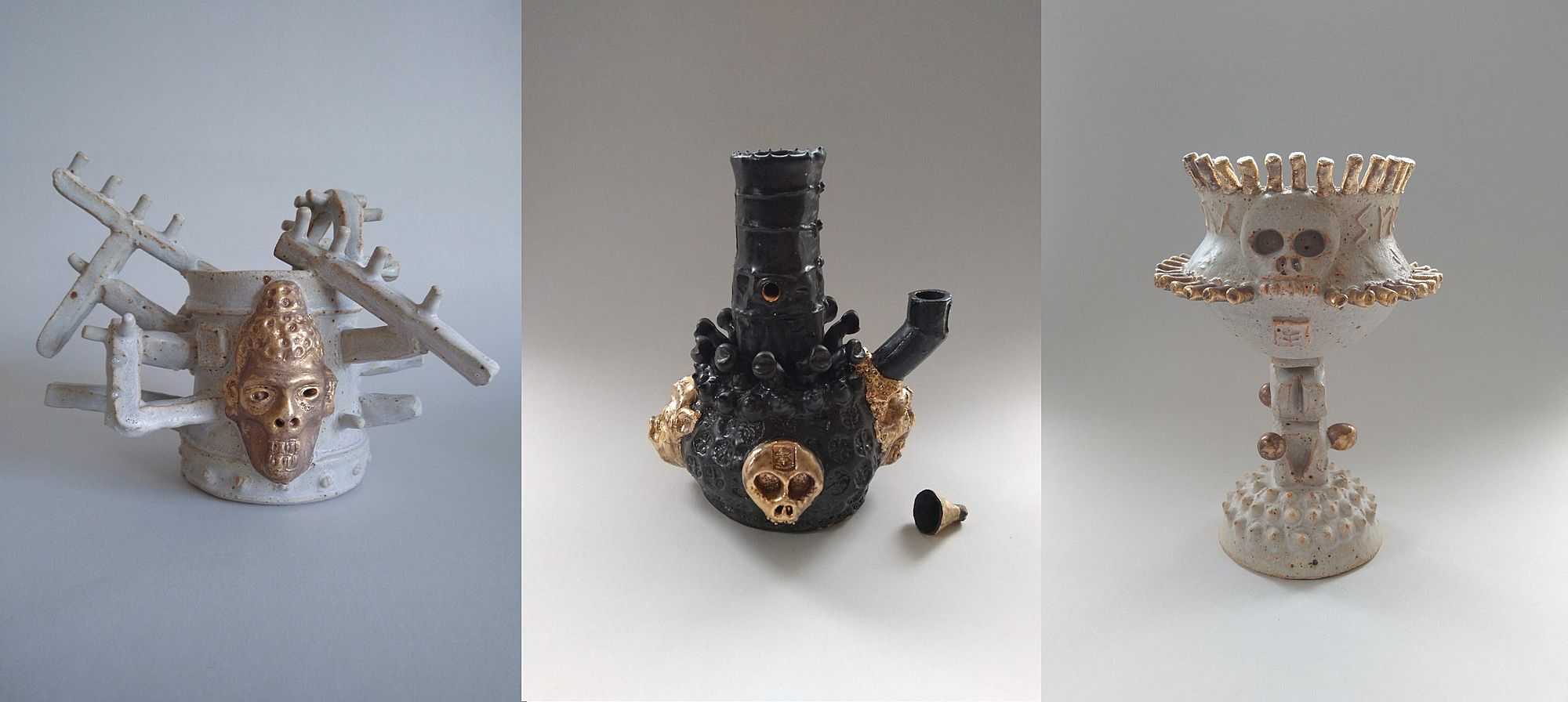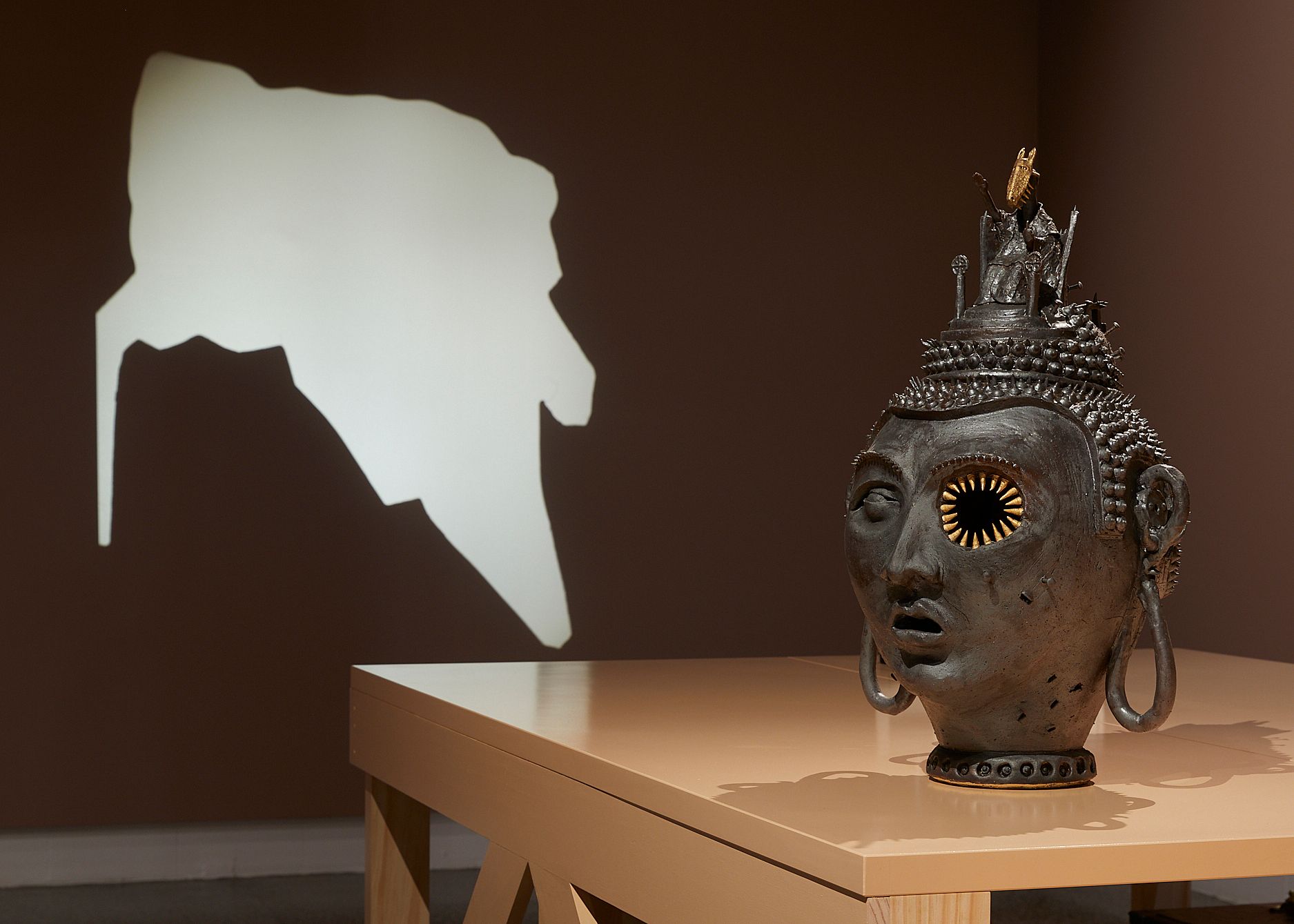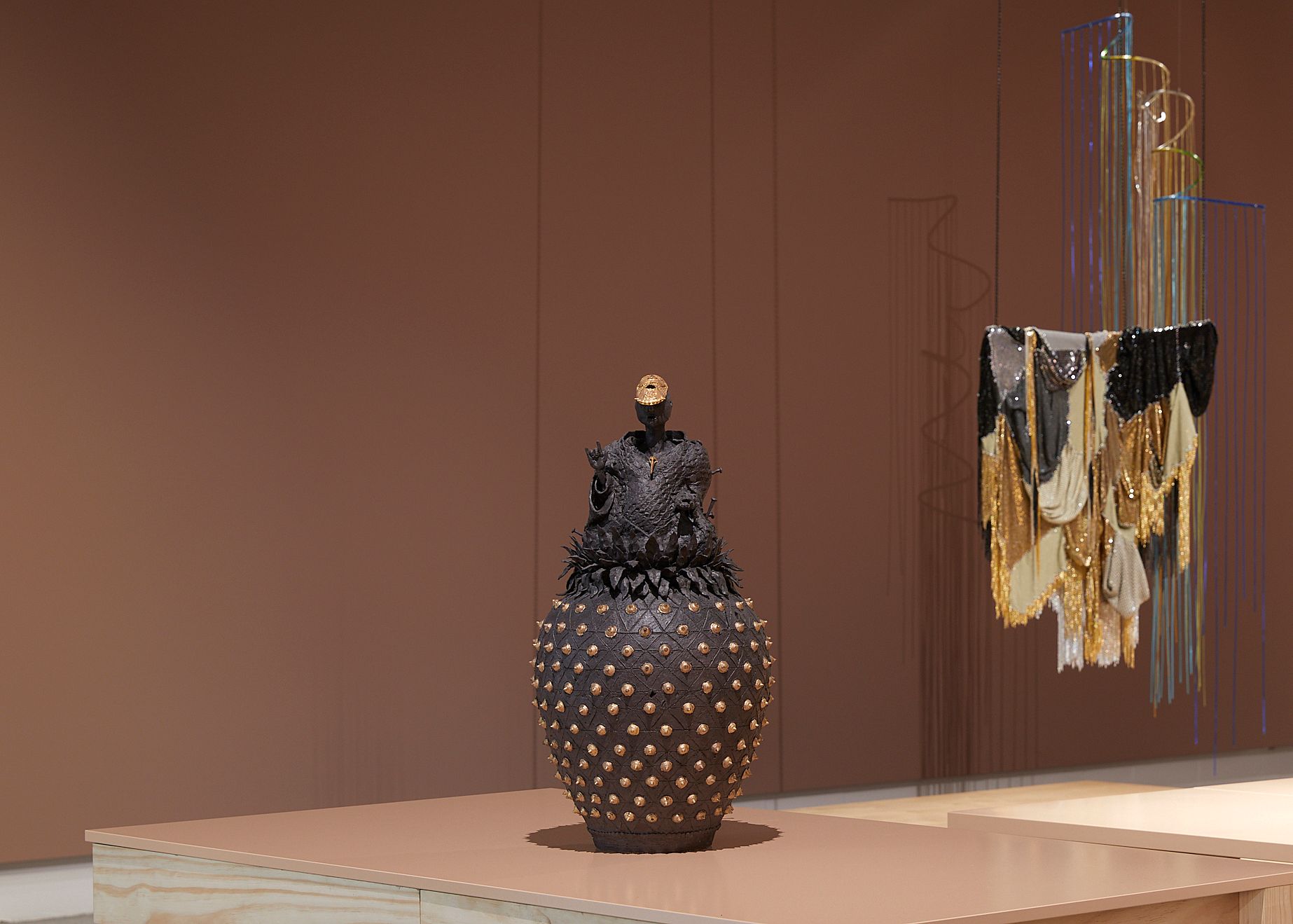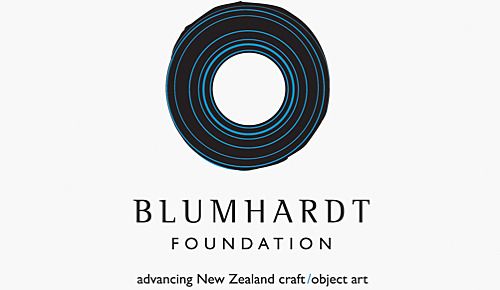The Myth and its Maker: Laurie Steer
Orissa Keane talks to the self-proclaimed Best Potter in the World
Being an artist has always been Laurie Steer’s job, but only recently has he been able to make it look that way on a balance sheet or a bank statement. By stepping away from certain conventions of the art world, Steer has been able to operate outside of them – though not without caution or criticism. Through his ceramic practice and the performance of The Best Potter in the World (#thebestpotterintheworld), Steer interrogates ideas of power, value and myth.
Alongside Moniek Schrijer, Cat Fooks and Michael McCabe, Steer is part of the group exhibition Deadweight Loss: The Value of Making, showing at Objectspace (1 August to 18 October 2020). Steer recounts how he predicted the exhibition would play out: “A group of really capable practitioners, some of the best in their field, would get together and have a show, the show would be epic and no one would sell anything but hundreds and hundreds of people would come.” It was an easy bet, he said, because he had seen it happen over and over. The artists shared in the same excitement, handshakes and pats on the back, no doubt leaving with the elation that comes with an exhibition opening. But only The Best Potter in the World left with $10,000.
As much of a joke as #thebestpotterintheworld is, it is also very serious
Alongside the three intricately crafted pots in the gallery, Steer created ‘merch’ which he called Operation Sin Tax. One hundred and sixty objects, ranging from tankards to goblets to pipes, priced from $60 to $400. In common terms, sin tax is the government tax levied on goods deemed harmful to society or individuals, such as alcohol and tobacco – hence goblets and pipes. These objects were sold through Steer’s own website, made available to purchase from 6pm on the night of the opening of Deadweight Loss. Steer imagined that during the opening speeches there would be a glow of faces lit by smartphones, navigating e-commerce, trying to buy the merch before it sold out.
It might seem arrogant or greedy, creating hype and exploiting FOMO in order to make money, but the situation is more nuanced than it seems. While it’s a dig at convention and consumer culture, it’s also a celebration of it; Steer is proving that artists can have money going straight into their bank accounts at the opening of an exhibition and their audience can enjoy an artwork for $60.
Laurie Steer, three objects from the series Operation Sin Tax, 2020. Photos courtesy of the artist.
When referring to The Best Potter in the World, what one is referring to is simultaneously a business, a performance, and what is intrinsically Laurie Steer. As much of a joke as #thebestpotterintheworld is, it is also very serious in the way Steer uses it to address issues he has faced as a creative practitioner in Aotearoa.
Steer identifies a number of what he calls ‘myths’ – common beliefs within the art world. One might say that Steer created his own myth – that of The Best Potter in the World – to counter the myths that he felt held him back. One such myth was that a ‘successful artist’ in Aotearoa must also, therefore, be financially successful. Steer lived that myth: he achieved representation from Hamish McKay and Ivan Anthony. “They were the biggest ‘cool’ dealers for my generation at the time,” says Steer. But he was still broke. He wondered, “How long before I get the financial recognition that matches the pats on the back?”
Steer stopped waiting for someone to tell him he had ‘made it’ and took it upon himself to just be The Best Potter in the World. “The weird thing was – this is really interesting and it’s hard to explain cause I only did that about three years ago – since I’ve done that, financially things have really worked out because everyone just believed it.” More people bought his pots, and he started getting invited to do more interviews and participate in more group exhibitions than before. It worked like a self-fulfilling prophecy.
“I’m just treating it like a coffee, taking away that mystique ... why make it hard for people?”
Another myth that Steer has refuted is the one that tells artists that they need to have gallery representation at all. Steer calls into question the gallerist’s role in a contemporary market. “If I’m doing all the work, I’m doing all the selling, and all the making and all the promotion,” then what does the gallerist provide? People have told him that his approach will be pissing gallerists off, but he says, “Why should I perpetuate their myth if I’m going to be broke?”
A major drawback for Steer about selling work in dealer galleries is the ‘red dot’ method of sales. A red dot next to a work indicates that it has sold, but these stickers denote no binding promise or contract. No one else can buy the work claimed by a sticker for the rest of the show, yet after losing the energy of the opening, people sometimes change their minds. “The number of people who have reneged on my pots, it’s heartbreaking.” Anywhere else, with everything else, if you want something, you find out how much it is and you hand over the money. “It’s not magical.”
So instead, Steer offers an online platform from which to buy his work, where each object is available to see, with price tags and a buy now button. “I haven’t invented it, I’ve just embraced modern technology. I’m just treating it like a coffee, taking away that mystique. Dealer galleries take cash, credit or bitcoin, just like everyone else, so why make it hard for people?” Steer refused to rely on a system of uncertainty, which appeared to flaunt money at him before taking it away. “It’s easier to go along with the myth when no one else is suffering,” but Steer has a family who he wants to be able to support with his job. E-commerce has enabled Steer to take control of his own practice from start to finish. He digs his own clay, fires his own pots, and manages his own sales and data.
“We don’t talk about money because it is a dirty thing ... I’m talking about survival.”
The fear of standing out – ‘tall poppy syndrome’ – can make it difficult or uncomfortable for artists to sell and promote their own work. Just being an artist calls for attention, perceived by some as being self-indulgent and pretentious. Arrogance (and "The Best Potter in the World" is indeed an arrogant claim) can result in audience alienation as well as admiration, although one need not pick a side. Steer is a tall poppy, but he's not lording it over anyone, he's pointing to the fertiliser by explaining his process.
At the same time, Steer doesn’t pretend that what has worked for him will work for everyone else. To his advantage, he was already well known through prior gallery representation before going out on his own. In addition, ceramics are not only saleable but collectable by design. In saying that, it took him until recently to see the returns on his saleable objects. The problem, Steer found, was not that he made work no one wanted, but that he made work no one knew about; or if they did know about it, there wasn’t an easy way to buy it. The problem of accessibility was fixed by Facebook, Instagram and Shopify, for only $24 per month.
During Deadweight Loss, Steer chose to give 10 percent of the Operation Sin Tax sales to Objectspace. By doing so, he showed the upper hand, but he also wanted to give back to an institution that allowed this opportunity in the first place, for which he was appreciative. It was Steer’s first merch run, and he credits Director Kim Paton and Objectspace for being supportive.
The day after the opening of Deadweight Loss, there was a panel discussion with the artists and curators, during which Steer revealed how much money he had made the previous night and how long it had taken to make the merch. With the spirit of full disclosure and transparency, Steer wants to fill the silence where the discussion of money in the arts should be. “We don’t talk about money because money is a dirty thing. Money somehow devalues the art – you know, I’m not talking about the art, I’m talking about survival.”
It would be easy to misinterpret Steer’s intention when it comes to the appropriation of symbols.
Looking at Steer’s pots, one can draw the connection between his practice and his approach to business. “Flip the myth and expose the belly, just look at it, look at it for what it is.” The pots often operate somewhere between usable and impractical, playing on the widely accepted distinctions between craft and fine art. A pot with such deliberate details as spikes and symbols commands the kind of attention paid to an important archeological artefact, wondering who and what it’s for and why it’s been made that way. While inviting close looking, Steer offers unexpected findings – “spikes on the insides of things… warts that come out of an otherwise delicious glaze.” Steer relates it to Buddhist philosophy, in which “largely the way out of suffering is looking at things and seeing them for what they are. Looking for actualities… This is what I’ve done with the business side of things, I just looked at it and some of it’s really ugly and some of it’s really difficult to talk about.”
Steer uses symbols in his pots in the same way, intending for them to be looked at for exactly what they are – just symbols. At the same time, he admits, “I can’t help myself but be mischievous but it’s because I want to have the conversation more than I want to piss people off … it’s all about intention.” Steer’s intention is to point at the absurd. Taking the cross for an example, he says, “If you’re not a Christian, that’s a kid walking around with a torture device around their neck!”
Laurie Steer, Spitting in the Wind, 2020 in Deadweight Loss: The Value of Making. Installation view, Objectspace. Stoneware, iron and ash glaze and gold. Photographer: Samuel Hartnett.
It would be easy to misinterpret Steer’s intention when it comes to the appropriation of symbols. In Deadweight Loss, Spitting in the Wind (2020) is a decapitated-looking Buddha head with a missing eye. This, again, relates to Buddhist philosophy and close looking. Steer understands Buddhism to not take itself too seriously. This definition of Buddhism may seem like a convenient justification to some, but Steer is not only sincere, he is also prepared to have the conversation with anyone who tells him he’s “taken it too far this time”. On the one hand, it is important to be respectful to cultural groups and their practices. On the other hand, it is valid – even expected – that artists challenge ideas and social norms. It is said that part of an artist's role is to reflect the world back on itself and to prompt discussion. These types of conversations can be uncomfortable but maybe that’s the reason they’re so important.
Despite the way it seems, Steer is not motivated by the acquisition of money for it’s own sake, but by the compulsion to make. Now that his online pot drops are selling out quickly, Steer can move on to the next thing just as fast. For him, there is nothing more motivating than selling everything, he sees the empty shelves in his studio and feels compelled to fill them.
Perhaps that’s why it’s easy for Steer to break the pots he puts so much time and thought into; the art – the process – is ephemeral anyway.
The late Barry Brickell, Steer’s mentor and one of the most celebrated ceramic artists in Aotearoa, used to say “it’s not the thing, but how”, placing emphasis on process. Steer adds, “What people think is art or is generally accepted as art is actually an artefact – it’s the remnants of making… It changes how you think about it.” It seems that Steer makes pots in the same way that many people would think a thought or jot down a note, using the method to process events, ideas and information. One of the pots in Deadweight Loss was created during the lockdown. “I was just making a pot that reflected the incredible social anxiety that I, and I think everyone in New Zealand, was feeling.” It is interesting that, for Steer, this particular artefact holds so much meaning but can equally be inconsequential. For this reason, the idea of legacy in an artefact doesn’t interest Steer. He looks upon past work with detachment. “I don’t feel like I’ve made them, they’re like looking back at postcards of where I’ve been in the past, they’re not mine anymore.”
Perhaps that’s why it’s easy for Steer to break the pots, the artefacts, he puts so much time and thought into; because the art – the process – is ephemeral anyway. Steer has become known for breaking pots that don’t sell – first at Sydney Contemporary 2019 and again at the close of Dirty Ceramics at the Dowse in March 2020. The decision to do this publicly might have been a gimmick, but it was also simply exposing a part of the process Steer and others at Driving Creek have been practising for years. The pan mill that crushes fired pots at Driving Creek contains pot fragments by Brickell and other renowned practitioners connected with the place, including Steer. Incorporating these fragments into new pots strengthens them physically and spiritually, establishing a continuity in all Steer’s pots. “That location is in the pots, with me all the time,” says Steer. “So if they’re not going anywhere else, they get reincarnated and made into new pots.” It seems a natural progression that the performance of The Best Potter in the World exposes more of his process and thinking to the public.
To some, breaking art at an art fair is a direct affront to what’s deemed sacred. Steer only broke a couple of pots before some gallerists bought the rest of them, “because they were bound up in the value of it… because they had to protect the story.” The $9000 pots in Deadweight Loss, which, as predicted, didn’t sell, will be smashed. Value is a slippery thing. The assigned ‘value’ of $9000 applies until a predetermined cut-off time, after which they became ‘worth’ reincarnating. “Either buy it or don’t buy it.”
Laurie Steer, Jack Knives Splatter, 2020 in Deadweight Loss: The Value of Making. Installation view, Objectspace. Stoneware, iron and ash glaze and gold. Photographer: Samuel Hartnett.
The tired fine-art-versus-craft debate is a red herring in Steer’s case; he subscribes to neither category. The data that Steer has collected about his own sales tells him that the same people who buy the mug (the craft) also buy the pottery class and the sculpture (the fine art) – if they have the means. “The mythology around art and craft drives price points. If anything, I think the sale of incredibly expensive art is in itself some kind of weird game. Almost like a religion, some weird mythology.” Because it takes incredible faith to believe something to be worth so much. There’s no hierarchy in the artefact if people are simply supporting an artist whom they like and whose work they like. “When everything sells really quickly, I just see it as a whole community of people around me patting me on the back… saying keep doing what you’re doing.”
While upfront about needing to earn a living, Steer isn’t interested in fame or wealth, placing higher importance on the personal connections that his job offers him. With the recent six-minute sell-outs on his online store, the artist faces a new challenge – how to maintain that personal connection with his buyers and collectors while it’s no longer viable to send out a drawing and thank-you note with every pot. “I’m happy to adjust my strategies to keep it being personalised… I don’t know how I’ll deal with that, honestly, it’ll be a nice problem to have and try to figure out an answer. The answer is definitely not to put the prices up and sell less.”
I found it encouraging to speak to an artist so openly about their experiences, process and intentions when the secrecy and gaslighting sometimes perpetuated in the art world can be disheartening for young or emerging artists. There are pockets within the art world where people like Steer provide clarity and a welcoming platform for discourse.
Steer is determined to make being an artist work for him for as long as he can, and it seems he has a lot more work to make. “Everything’s an experiment, I don’t think anything is really ever finished.”
Blumhardt Foundation
This piece is presented as part of a partnership with Blumhardt Foundation. They cover the costs of paying our writers while we retain all editorial control.
Feature image: Laurie Steer, Puppet Vulture, 2020 in Deadweight Loss: The Value of Making. Installation view, Objectspace. Stoneware, iron and ash glaze and gold. Photographer: Samuel Hartnett.
